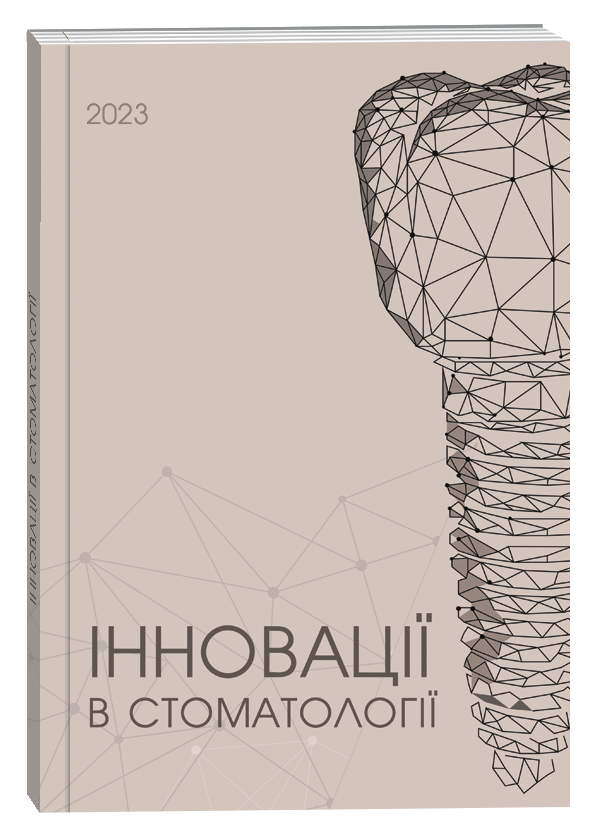PRINCIPAL DIFFERENCES BETWEEN ORIGINAL AND COUNTERFEIT ROTARY ENDODONTIC FILES ACCORDING TO THE RESULTS OF SCANNING ELECTRON MICROSCOPY (ON THE EXAMPLE OF SOCO SC PRO SYSTEM)
DOI:
https://doi.org/10.35220/2523-420X/2023.4.3Keywords:
endodontic files, electron microscopy, counterfeit, defectAbstract
Purpose the study. To establish principal differences between original and counterfeit endodontic files using scanning electron microscopy method on the example of Soco SC Pro system. Research methods. The study was conducted by purposefully comparing SEM characteristics of original endodontic files and their counterfeits in laboratory conditions. The original Soco SC Pro rotary nickel-titanium instruments (Foshan Soco Precision Instrument Co., Ltd., Foshan, China) were used for the study, while also their counterfeits, the originality of which could not be confirmed by tracking the batch and serial number to the manufacturing facility. SEM analysis of endodontic instruments was carried out on the basis of an electron microscopy laboratory using Tescan Mira3 LMU scanning electron microscope (TESCAN). Scientific novelty. After provided SEM analysis, it was found that the width of the working tip base for the original files of size 20 varied in the range of 192–207 μm, which corresponds to the dimensional characteristics indicated on the package, while the width of the working tip base for the counterfeit files varied in the range of 238–271 μm, which does not correspond to the dimensional characteristics indicated on the package. No significant differences at the working surfaces were found between original and counterfeit files according to SEM data. Conclusions. The method of scanning electron microscopy revealed that counterfeit endodontic instruments, which are fakes of original rotary files, differ from the latter by the sharper design of the working tip and a wider width of the tip base, while in the areas of the working part connection with the shank counterfeit files demonstrated presence of unknown compound, which could potentially be used to glue two component parts of the item. The size of the working tip among counterfeit endodontic files exceeded the dimensional values indicated on the package in all analyzed samples and did not meet the ISO standard.
References
Proffitt E. Counterfeit and non-compliant dental devices: the dangers and how to mitigate them. Dental Update. 2016. Vol. 43(4). P. 307–312.
Christensen G. J. Are you using “gray-market” or counterfeit dental products?. The Journal of the American Dental Association. 2010. Vol. 141(6). P. 712–715.
Mechanical characteristics of counterfeit Reciproc instruments: a call for attention / C. S. Rodrigues, V. T. L. Vieira, H. S. Antunes [et al.]. International Endodontic Journal. 2018. Vol. 51(5). P. 556–563.
FDI World Dental Federation. FDI policy statement on Grey market and non‐compliant dental products: Adopted by the FDI General Assembly: September 2016, Poznan, Poland. International Dental Journal. 2017. Vol. 67(1). P. 14–15.
Caveat emptor when purchasing dental products online / R. B. Price, J. L. Ferracane, B. W. Darvell [et al.]. The Journal of the American Dental Association. 2017. Vol. 153(3). P. 196–199.
Optimized Approach of Dental Composites Identification with The Use of Original Spectrophotometric Algorithm / S. Kostenko, P. Dzupa, R. Levandovskyi [et al.]. Journal of International Dental & Medical Research. 2018. Vol. 11(2). P. 403–408.
Clinical control of denture base acrylics polymerization for the quality assurance: pilot study of spectroscopic approach / Y. Lokota, I. Paliichuk, V. Paliichuk [et al.]. Journal of International Dental & Medical Research. 2020. Vol. 13(2). P. 422–429.
Comparison of design, metallurgy, mechanical performance and shaping ability of replica‐like and counterfeit instruments of the ProTaper Next system / J. N. R. Martins, E. J. N. L. Silva, D. Marques [et al.]. International Endodontic Journal. 2021. Vol. 54(5). P. 780–792.
A critical evaluation of physical and manufacturing properties of genuine and counterfeit rotary nickel–titanium endodontic instruments / B. Madytianos, E. Liu, A. Marshall [et al.]. Australian Dental Journal. 2023. Vol. 68(3). P. 179–185.
Uslu O., Haznedaroglu F., Keskin C. Comparison of mechanical resistance and standardisation between original brand and replica-like endodontic systems. Australian Endodontic Journal. 2023. Vol. 49(1). P. 149–158.
Multimethod assessment of design, metallurgical, and mechanical characteristics of original and counterfeit ProGlider instruments / J. N. Martins, E. J. Silva, D. Marques [et al.]. Materials. 2022. Vol. 15(11). P. 3971.
Structural analysis of NiTi endodontic instruments: A systematic review / I. B. Barbosa, F. G. Ferreira, P. Scelza [et al.]. Iranian Endodontic Journal. 2020. Vol. 15(3). P. 124.
Counterfeit Endodontic Files Features Objectified with Scanning Electronic Microscopy: Comparative Study of SOCO SC Pro Original and Falsified Rotary Instruments / I. Noenko, M. Goncharuk-Khomyn, V. Belun [et al.]. Journal of International Dental & Medical Research. 2023. Vol. 16(2). P. 565–573.
Noenko I., Goncharuk-Khomyn M. Scanning Electronic Microscopy Surface Characteristics of Six Endodontic Files Systems Available in Ukraine: Observational Study. Journal of International Dental & Medical Research. 2023. Vol. 16(1). P. 24–31.
Perfection of unused Ni-Ti endodontic files, myth or reality? A scanning electron microscope (SEM) study / A. AbuMostafa, M. AlOmari, I. AlQashtini [et al.]. Journal of Dentistry and Oral Hygiene. 2015. Vol. 7(2). P. 16–21.
Comparison of cyclic fatigue resistance of original and counterfeit rotary instruments / H. Ertas, I. D. Capar, H. Arslan [et al.]. Biomedical engineering online. 2014. Vol. 13(1). P. 1–6.








